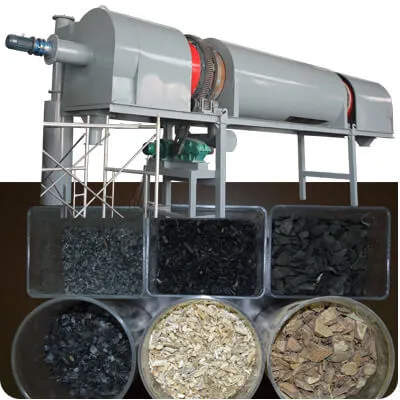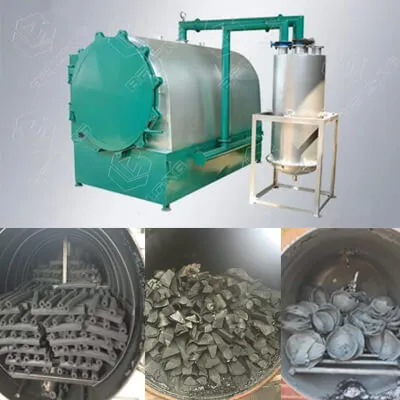Airflow carbonization furnace produces charcoal from sawdust briquettes, wood, bamboo, coconut shells, rice husk, agro wastes, etc. The flue gas generated during the carbonization process will flow through the duct to the combustion zone, and then be ignited, and the subsequent carbonization only needs to burn these gases to complete. That’s why it is called an airflow carbonization furnace. It is popular with the advantages of smokeless and high conversion ratio.
External heating carbonization furnace
The airflow carbonization furnace contains an inner container, and the raw materials are put into the inner container, and then the inner container is put into the furnace body. After the charging is completed, the fuel is burned in the combustion zone below the inner container to heat. The fire heats the surface of the inner tank without direct contact with the raw materials. We call it external heating or retorting. The temperature in the inner tank continues to rise, and eventually, carbonization begins after reaching a certain temperature.
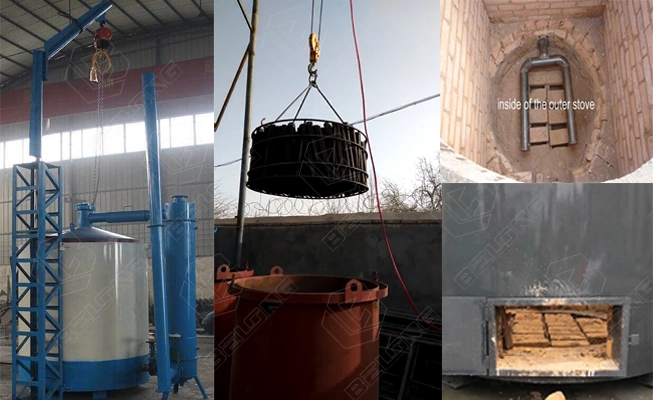
Hoist carbonization furnace
In the above picture, the airflow carbonization furnace includes an electric hoist, so it is also called a hoist carbonizing furnace. With the electric hoist, it can lift the inner tank easily, which save labor cost. Each furnace is equipped with 3 inner tanks. Carbonizing time is 8-12 hours to ensure the good quality of charcoal. After one tank of materials finishes carbonization, you can lift out it by the hoist and then put another tank of materials for charring.
Airflow Carbonization Furnace Working Process
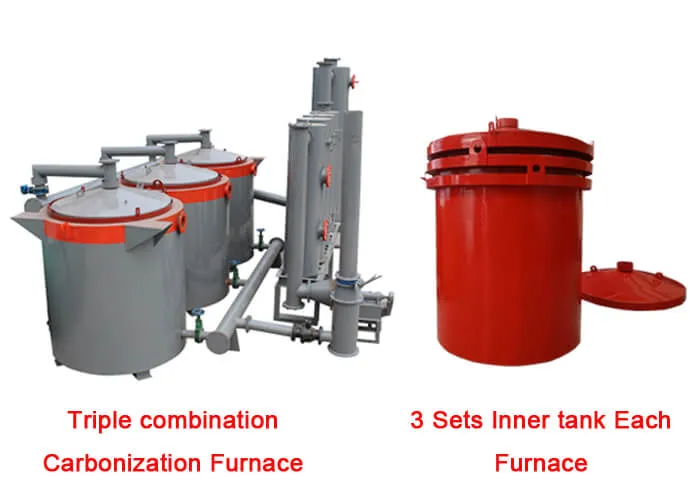
The whole charring process can generally be divided into the following three stages.
- Drying stage
From the start of ignition to the temperature of the furnace rising to 160 ° C, the moisture in the ingredient is mainly evaporating by the external heating and the heat generated by the external combustion. The chemical composition of materials has hardly changed.
- Carbonization start
Continue external heating, so that the temperature inside the furnace rises to between 160 and 280 °C. At this time, the biomass material undergoes a thermal decomposition reaction, and its composition begins to change. Among them, the unstable composition, such as hemicellulose, decomposes to form CO2, CO and a small amount of acetic acid.
- Overall carbonization stage
At this stage, temperature rises to 400-600 ° C. Biomass materials undergoes thermal decomposition abruptly, and produce a large amount of liquid products such as acetic acid, methanol, and wood tar. In addition, flammable gases such as methane, ethylene, etc are generated, and they flow through the duct to the combustion zone, and then be ignited. When the combustible gas is ignited, the external fuel continues to be burned until all the pores on the combustion tube are ignited. At this time, the addition of external fuel is stopped. Subsequent carbonization only needs to burn the recovered gas until the carbonization is completed.
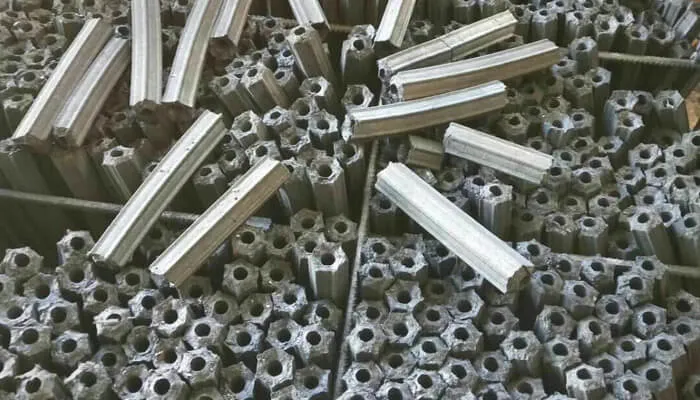
Through the above introduction, we have a certain understanding of the airflow carbonization furnace. Its heating method is external heating, and each carbonization requires additional fuel. So are there any carbonization furnaces that do not require burning external fuel? Of course there are.
Internal combustion carbonization furnace is also called internal heating carbonization furnace. Similar to the ignition method of traditional charcoal cellars, it ignites the raw materials, and the internal combustion heats up to carry out the carbonization reaction.
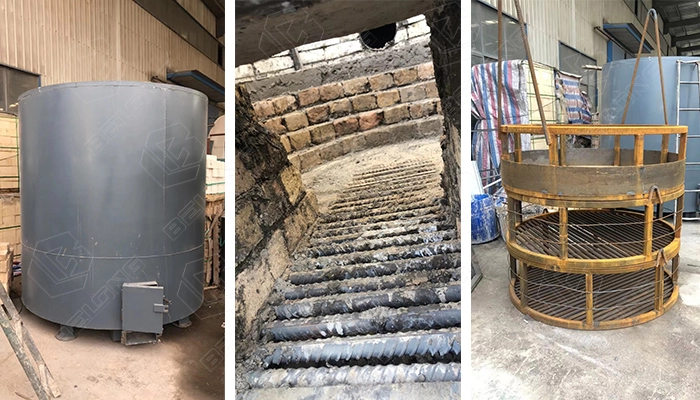
The internal combustion carbonization furnace consists of a main furnace body, 3 iron frames, a cooling cover, and a set of lifting brackets
Charcoal produced by the internal combustion carbonization furnace
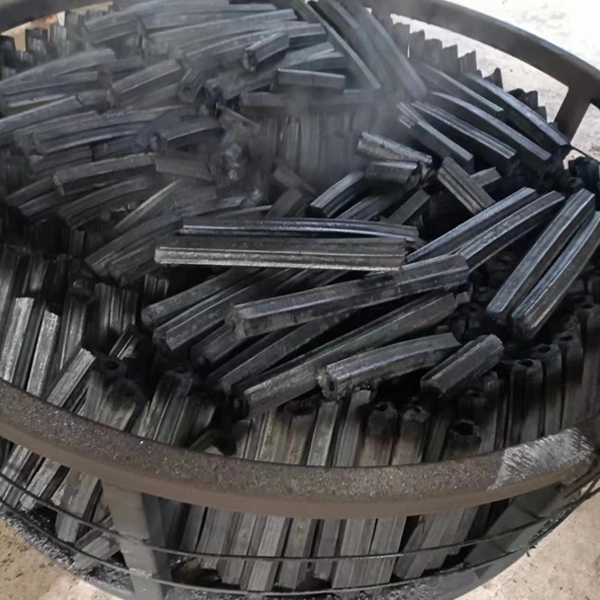
The difference between external heating and internal heating carbonization furnace
This article is a general introduction to air-flow carbonization furnaces and internal-combustion carbonization furnaces. If you need to purchase it or to know the latest price and more information, please feel free to contact us.
